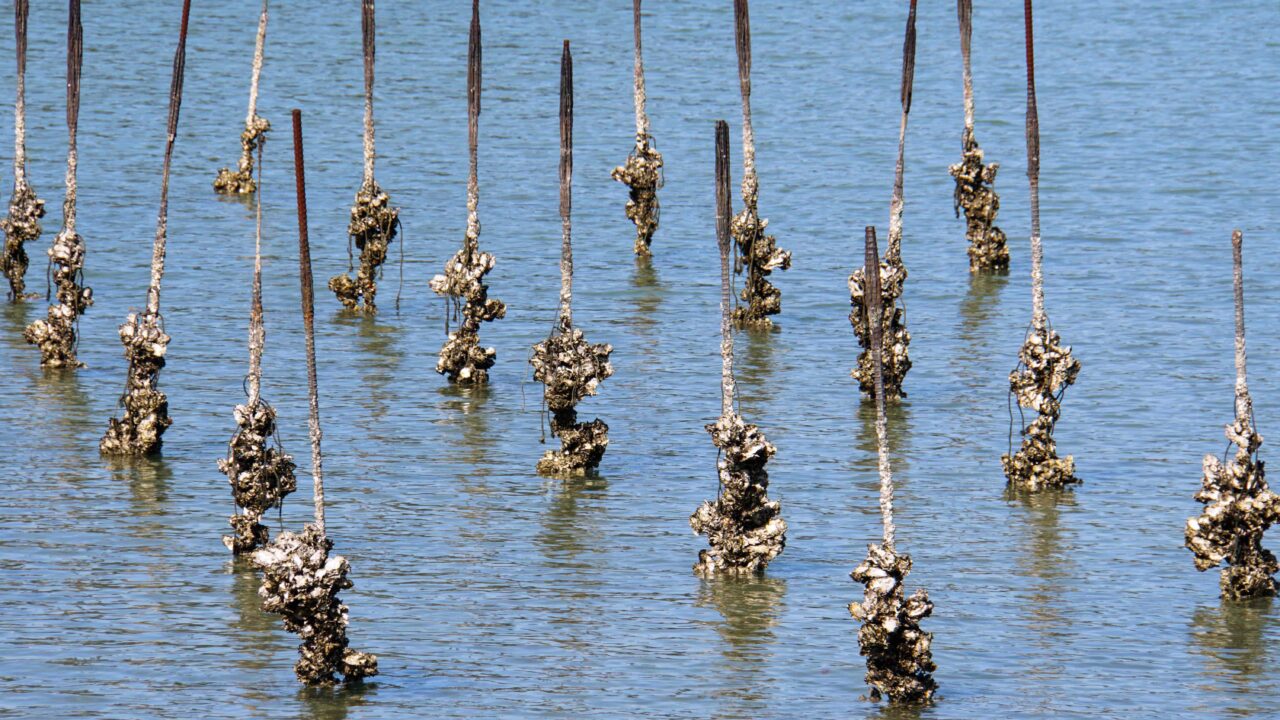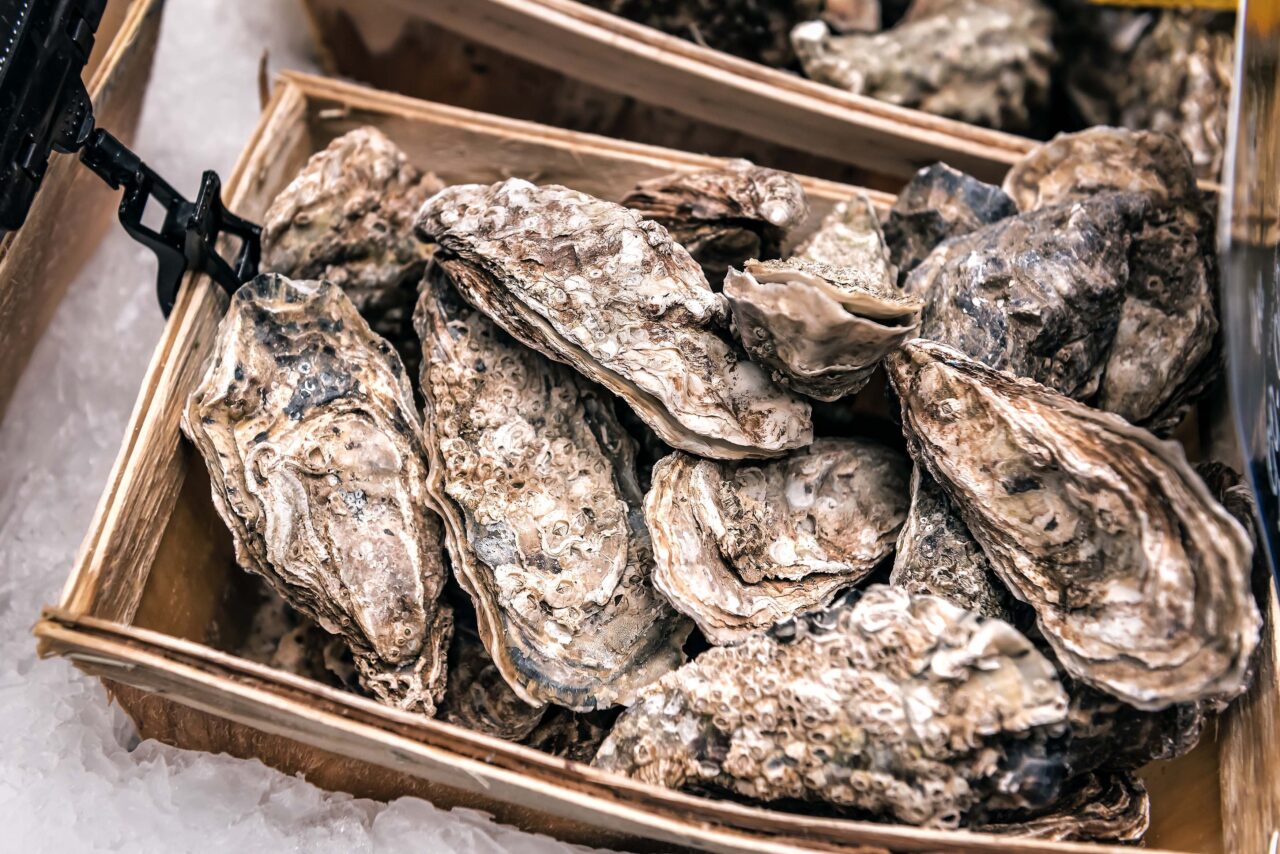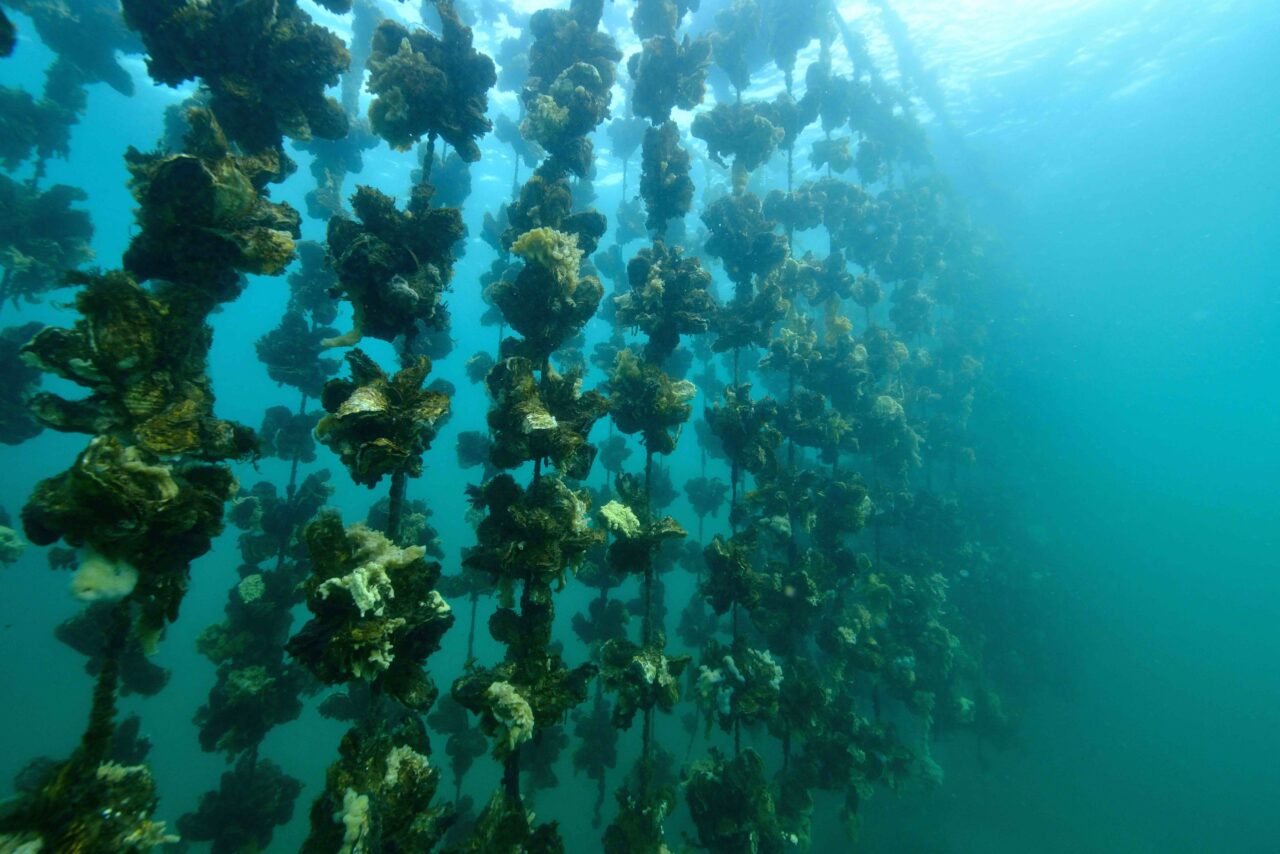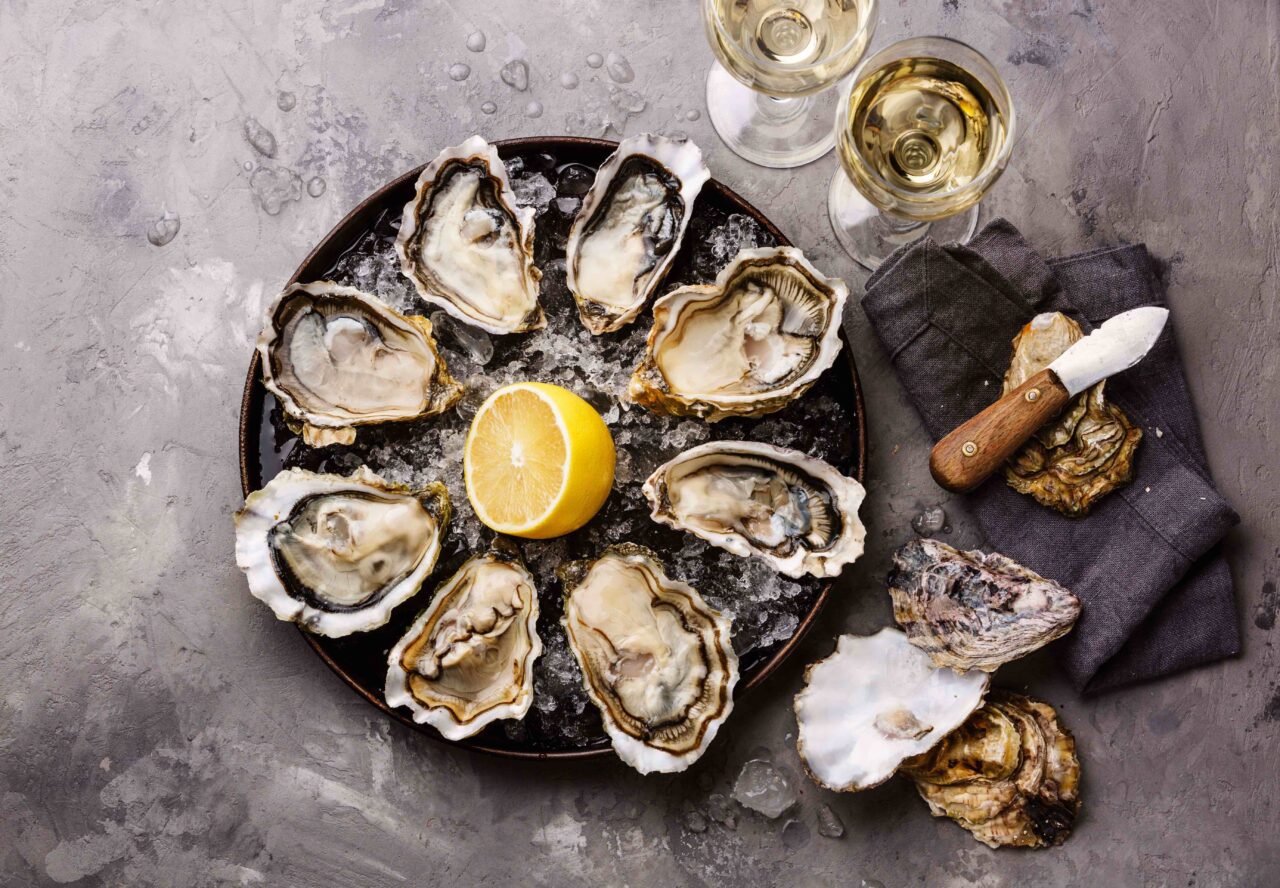Nederlands
English
Deutsch
Français
Oysters: everyone knows what they are, but not many people have actually eaten one. To most people, oysters are not a typical or easily accessible product. However, they are a delicacy that everyone should try at least once. The salty flavour of an oyster is truly unique.
Because oysters are becoming increasingly popular in the Netherlands, we would like to provide you with all the information you need for your oyster shopping, such as the different types of oysters available, the best period for oysters and the differences in size and quality. After reading this article, you, as a buyer of fresh oysters, will know what to look for and which oysters are simply the tastiest.
Would you like to discover Mooijer-Volendam’s top-quality oyster products? Please feel free to browse through our extensive range of oyster products. We will be happy to help you!
The following topics are covered in this article:
As we already briefly mentioned in the intro, there are many different types of oysters. This article starts with a general introduction to the oyster, and after that, we will discuss the different oyster types and sizes in detail.
An oyster is a bivalve mollusc. Bivalves have an external calcium skeleton – the shell – held together by one or more adductor muscles. The shell of an oyster is very thick and varies in shape depending on the species. As with the scallop, the lower (right) shell is convex, and the upper (left) shell is flat.
The ‘common’ oyster, better known as the European Flats or flat Zeeland oyster (Zeeuwse oester in Dutch), is classified by its Latin name, Ostrea edulis, which means ‘edible oyster’. Another well-known type of oyster, which is a lot coarser and rectangular, is also an edible oyster. This oyster is known as the Japanese oyster or Creuse oyster, as the Dutch call it,and is often confused with the Portuguese oyster as they have almost the same appearance. Therefore, they are now simply classified under one Latin name, Crassostrea gigas.
An oyster’s diet consists mainly of plankton, and because plankton has a different flavour, colour and composition depending on the environment and habitat, different oysters also have different flavours. Every type of oyster has its own characteristic, regional flavour. Hence, the habitat and harvesting area of an oyster is very important.
The European Flats versus the Japanese and Portuguese (or Creuse) oysters, which we already briefly mentioned above, are both bivalve molluscs and have the same lifestyle. This means they need something to cling to, such as rocks or shell banks, thus making oysters part of the so-called epifauna. Oysters can also latch on to each other when other oysters have already attached themselves to, for example, a rock. Because of this, large numbers of oysters can live close to each other. These are also called oyster beds.

The lifestyle of the European Flats and the Creuse oyster is one of the few similarities; these interesting shellfish are otherwise completely different from each other. It is important for you, as a buyer, to know that not only are there many different types of oysters – divided into flat and Creuse – available, but that these two categories also have a different classification system.
The anatomy, appearance and flavour of these flat oysters are different from those of the Creuse oysters. The characteristic of the flat oyster is the beautiful, often evenly rounded shell. The flat oyster’s meat has a rather salty flavour and is firmer than that of the Japanese and Portuguese oysters. It takes no less than six years for a flat oyster to mature; one of the reasons why the flat oyster is a lot more expensive than the Creuse oysters.

Flat oysters are classifieddifferently than Creuse oysters. The classification of the flat oyster is based on a system of zeros: the more zeros, the larger the oyster. Size 000 is an oyster of 150 grams. At Mooijer-Volendam, this classification is indicated as follows: Flat oysters Zeeland 3/0, Flat oysters Zeeland 4/0, Flat oysters Zeeland 5/0 and Flat oysters Zeeland 6/0, whereby 6/0 is the largest size.
Creuse oysters are particularly well known for their coarse appearance. Its shape is more elongated than the flat oyster, and its shell is much thicker and coarser. Creuse oysters are fully grown and ready for consumption after only three years. For this reason, this type of oyster is very popular: a high-quality, affordable oyster.
Creuse oysters are often numbered from small to large. A system of 0 to 5 applies to the Creuse, where 5 is the smallest oyster and 0 is the largest. The larger Creuse (2, 1 and 0) are often used for cooking. Sizes 3, 4 and 5 are most suitable for eating raw. The most popular oyster size to eat raw is number 3: this oyster is the best in terms of bite-size. And the bigger the oyster, the less salty it is.
Large oysters are generally the most popular. In many restaurants in the Netherlands, oysters are more often prepared than served as a raw dish. At Mooijer-Volendam, we offer all the oyster types and sizes, but we especially have a wide selection of the larger Creuse oysters (2, 1 and 0).
As a buyer, you will come across many more names when you go looking for oysters: online, at fishmongers and wholesalers and suppliers, of course. This is mainly due to the location where the oyster is cultivated or harvested. The many different locations within Europe have also led to many different names.
Fines de Claires, Gillardau, Spéciale de claire La Réserve, Creuses de Zélande and Marenne are all Creuse oysters. The Fines de Claires are the most popular and best-known among these oysters and are mainly cultivated along the French-Atlantic coast. These delicate, soft oysters have a beautifully elegant, slightly nutty flavour. The bélon or flat oysters are cultivated throughout Europe, and in the Netherlands, these are the flat Zeeland oysters.
The oysters’ habitat consists mainly of the peripheral seas of the Atlantic Ocean, from Norway to North Africa. Oysters are also very common in the Mediterranean. Unfortunately, due to overfishing, the natural population of oysters in the North Sea has almost completely disappeared. The Japanese oyster can still be found in the Wadden Sea: the blue-grey oyster shells that you come across on the beach while walking come from this oyster species.
The Japanese Oyster was brought to Zeeland more than half a century ago. Today, this oyster may rightfully bear the name Zeeland oyster because it is the most common oyster in Zeeland. The flat Zeeland oyster is an exclusive product: the oyster grows a lot slower than the Creuse oyster and needs five to six years to mature. As a result, the flat Zeeland oyster has a refined and unique flavour.
The wild Japanese oysters are spread out across the Wadden Sea in large intertidal oyster banks. At low tide, these oyster banks emerge, and the oysters are harvested the old-fashioned way: by hand. They are then cleaned and packaged ashore.
The R in the month!
In the Netherlands, the oyster season runs from September to the end of April. That means that the delicious flat Zeeland oyster is available in the Netherlands during the months with an R in their names. These are also the best months to order oysters: wild, fresh and with the best flavour. During the summer months, oysters taste greasier and milky. Fortunately, cultivated oysters are now available all year round and are just as tasty during the summer months.
Fun fact: the French word for oyster is huître, which can literally be translated as ‘eight R’s’. This French word refers to the eight months with an R in their names in which fresh wild oysters are available.
Worldwide, most oysters are cultivated these days. There are two main types of cultivation methods for oysters: bottom culture and off-bottom culture, and both these methods know various forms. The most traditional form of bottom culture is the oyster bed cultivation. Harvesting takes place at low tide, and the oysters are then harvested with large rakes. Alternatively, the oysters are cultivated at a depth of 5 to 10 metres. The advantage of this deep-water method is that the oysters constantly receive the best nutrition. A disadvantage is that they are not protected from predators, and their harvesting requires the use of boats with trawls. Therefore, this method is much more expensive and, of course, less sustainable.

An off-bottom culture form, the longline method where oysters are hung vertically or horizontally on ropes in the water, can only be used in somewhat calmer seawater. These oysters have a studier shell and firmer meat because the rope allows for more interaction with the environment, and thus the oyster has to ‘hold on’ tighter. Another off-bottom culture form – the rack and bag method –takes advantage of the fact that seawater is usually anything but calm. With this method, the oysters are placed in large iron mesh bags on elevated platforms in intertidal regions, where they gently tumble back and forth twice a day.
After cultivating and harvesting the oysters, the cultivation process continues: the oysters must also be matured. This is the most important part of the process: the flavour of an oyster is formed during the maturation process. It takes a lot of work, which is why some oysters are much more expensive than others. The oysters must first be sorted and are then regularly shaken and repositioned.
In France, after being cultivated, the Fines de Claires oysters are moved to what the French call ‘claires’. These are oyster beds where the oysters remain for a few months. These natural oyster beds are old salt bays with brackish water and strongly influence the oyster’s colour and flavour.

Before an oyster can be sold under the name ‘Fine de Claire’, it must have spent a minimum of one month and a maximum of three months in a claire, with a maximum of 20 oysters per square metre. The Fine de Claire is a delicate, soft oyster and tastes slightly sweeter than other oyster varieties from saltier seawater. The longer the breeding process of the oyster takes, the higher the selling price.
An oyster cultivator (or oyster farmer) works for three to four years on each oyster. During this process, oysters are handled approximately 150 times, involving more than 30 different procedures before eventually ending up in an oyster basket!
Fresh oysters are stored in a wooden basket or crate. These have openings, as the oysters are still alive. However, the basket is always properly closed with staples or tightened with tie wraps: this keeps pressure on the basket or box to prevent the oysters from opening.
Oysters are fresh when their shell is still closed. If the oyster is open slightly and you tap the shell, it will close again. If the shell does not close, the oyster is no longer edible. On average, oysters can live outside the water for nine days. After purchase, they should be stored in a cool place and never in water.
How do I open an oyster?
Opening an oyster requires a certain dexterity to avoid damaging it. It works like this:
Hold the oysters with one hand between a folded tea towel with the flat shell facing upwards. Then insert a sturdy (oyster) knife into the hinge between the two shell halves.
Gently pry the knife in and open the shell with a short twist. This procedure is also known as shucking.
Separate the upper and lower shells by cutting along the gap. Hold the oyster upright to prevent the liquid from seeping out. Finally, remove the flat shell and cut the oysters loose inside the convex shell. Bon Appetit!
Preparing fresh oysters
Contrary to what we see in movies and on television, you don’t have to eat an oyster raw from its shell; oysters are often also grilled a little before eating them. If you choose to eat an oyster raw, sprinkle some pepper on the oyster and perhaps add a little lemon juice; this complements the flavour of the raw oyster.
Nowadays, oysters are more often prepared before they are consumed, and even then, an oyster does not need much: a short grill in the oven is enough. It is also tasty to use pepper and lemon when grilling the oyster. Add a little butter and garlic, put them in the oven for a few minutes and enjoy!
Have we piqued your interest, and are you curious about Mooijer-Volendam’s full range of oyster products? At Mooijer-Volendam, we offer a diverse range of oyster products: from the flat Zeeland oyster to the refined French Fins de Claires.
Discover Mooijer-Volendam’s entire range of oyster products
Are you looking for fresh, good-quality oysters? Then you have come to the right place. As a wholesaler, Mooijer-Volendam sets high standards for its quality and, therefore, also for our different types of oysters. Our customers can rely on AAA product quality, which our customers also demand of us.
That is why more and more customers choose us as their wholesale partner in the catering industry or as a wholesaler to fish shops, Asian shops, specialist retailers and large retailers.
Are you curious about our full range of oyster products?